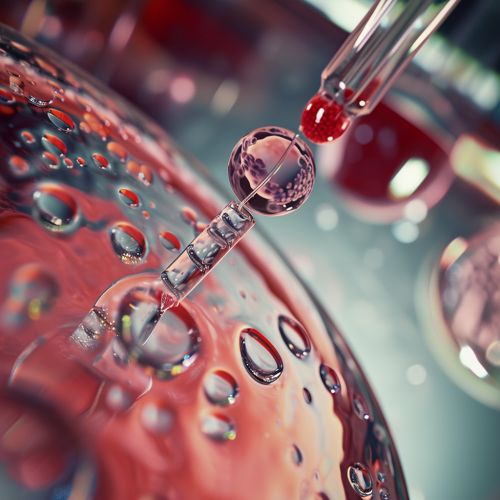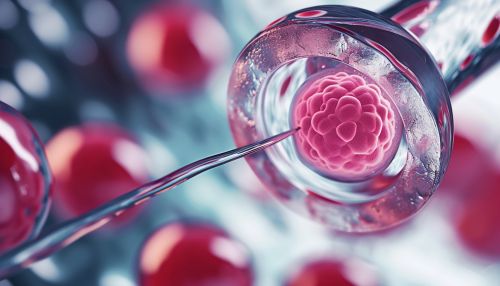Hematopoietic stem cell transplantation
Overview
Hematopoietic stem cell transplantation (HSCT) is a medical procedure in the field of hematology and oncology that involves the intravenous infusion of autologous or allogeneic stem cells to reestablish hematopoietic function in patients whose bone marrow or immune system is damaged or defective. This procedure is often used to treat patients with hematological malignancies, immunodeficiency disorders, and some solid tumor cancers.


History
The history of HSCT dates back to the early 20th century when scientists began to understand the role of bone marrow in blood formation. The first successful HSCT was performed in the late 1950s on a patient with leukemia, marking a significant milestone in the field of medical science.
Types of HSCT
There are two main types of HSCT: autologous and allogeneic. Autologous HSCT involves the use of a patient's own stem cells, which are harvested before the administration of high-dose chemotherapy or radiation therapy. Allogeneic HSCT, on the other hand, involves the use of stem cells from a genetically matched donor.
Autologous HSCT
In autologous HSCT, stem cells are harvested from the patient's own bone marrow or peripheral blood prior to the administration of high-dose chemotherapy or radiation therapy. The harvested stem cells are then cryopreserved and reinfused into the patient following treatment.
Allogeneic HSCT
In allogeneic HSCT, stem cells are harvested from a genetically matched donor. The donor can be a sibling, an unrelated matched donor, or a partially matched family member. The stem cells are then infused into the patient following a conditioning regimen.
Indications
HSCT is indicated for a variety of hematological malignancies, immunodeficiency disorders, and some solid tumor cancers. These include acute myeloid leukemia, acute lymphoblastic leukemia, chronic myeloid leukemia, non-Hodgkin lymphoma, Hodgkin lymphoma, multiple myeloma, and myelodysplastic syndromes. HSCT is also indicated for certain non-malignant conditions such as aplastic anemia, sickle cell disease, and thalassemia.
Procedure
The HSCT procedure involves several steps: mobilization, harvesting, conditioning, transplantation, and post-transplant care.
Mobilization
Mobilization is the process of stimulating the production and release of stem cells from the bone marrow into the peripheral blood for harvesting.
Harvesting
Harvesting involves the collection of stem cells from the donor or the patient. This can be done through bone marrow harvest or peripheral blood stem cell harvest.
Conditioning
Conditioning involves the administration of high-dose chemotherapy or radiation therapy to the patient to eradicate the underlying disease and to suppress the immune system to prevent rejection in the case of allogeneic HSCT.
Transplantation
Transplantation involves the infusion of the harvested stem cells into the patient's bloodstream. The stem cells then travel to the bone marrow where they begin to produce new blood cells.
Post-Transplant Care
Post-transplant care involves monitoring the patient for complications and providing supportive care until the transplanted stem cells engraft and start producing new blood cells.
Complications
Complications of HSCT can be acute or chronic and can include graft-versus-host disease, infections, organ toxicity, and relapse of the underlying disease.
Future Directions
Future directions in HSCT research include the development of new conditioning regimens, the use of gene therapy to modify stem cells, and the use of immunotherapy to enhance the graft-versus-tumor effect.
